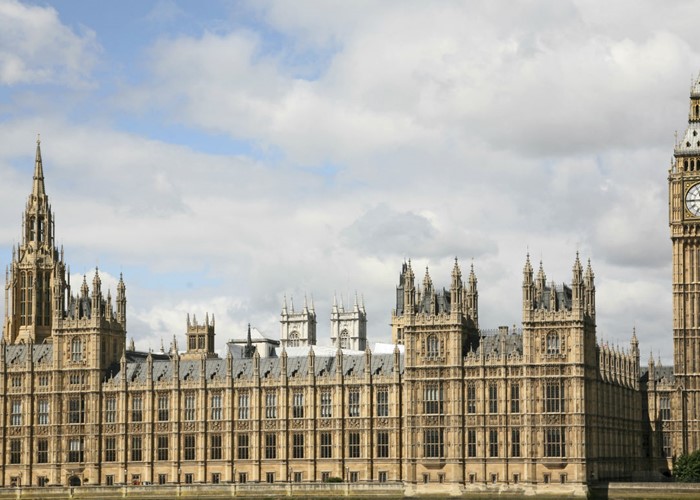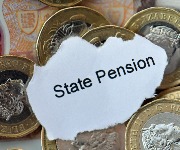What to do now before rates rise!

The Bank of England is ready to raise its base rate, so smart borrowers and savers should act now.
Mervyn King, the Governor of the Bank of England, has sent a simple message to Britain: "Get ready for higher interest rates."
In its latest quarterly Inflation Report, the Bank warned that the Consumer Prices Index (CPI) measure of inflation was likely to remain above the Bank's 2% target throughout this year and 2012.
What's more, the Governor warned that inflation could rise above 5% shortly, largely thanks to rising gas and electricity bills. The Bank expects gas bills to rise by 15% and electricity bills by 10% in the coming winter.
In other words, the steeply rising cost of living, hardly offset by low pay rises, will continue to squeeze disposable incomes until 2013. Thanks to this weak consumer spending, the Bank has lowered its expectations for growth.
The Bank now expects the UK economy to grow by below 2% this year and perhaps 2.5% next year. So, although the British economy is no longer on its knees, it continues to limp along in the aftermath of the global financial crash of 2007-09.
Rates set to rise
With the Bank predicting that inflation will stay higher for longer, financial markets are now pricing in an earlier rate rise. Last week, interest-rate futures suggested that the Bank's base rate would rise next January. However, following Mervyn King's comments, futures markets have shifted and now suggest the first rate hike will come as early as December.
Markets are pricing in a 0.25% rate hike this year, followed by a full 1% hike in 2012 and another 1% in 2013. If this proves correct, then the base rate will rise from 0.5% to 2.75% by the end of the year after next -- or almost six times its present level.
Of course, given that the base rate largely governs lending rates, a rising base rate will mean higher interest rates across the board. While higher rates may be good news for hard-pressed savers, they will pile yet more pressure on British borrowers.
Time to plan ahead
Let's look at what each of us can do to cope with higher interest rates:
1. If your mortgage rate is fixed
Happily, you don't need to do anything right now. However, put a reminder in your diary for three months before your fixed rate ends. When this time comes, be sure to shop around for best buy mortgages to replace your expiring fixed-rate deal.
In the meantime, if you have plenty of spare cash and can partly repay your home loan without penalty, then try paying off your mortgage faster with monthly overpayments or lump sums.
2. If your mortgage rate varies
If your home loan has a variable rate (for example, it is linked to the base rate or your lender's standard variable rate), then your interest rate may start to rise later this year. For the seven million borrowers in this position, this could mean sharply increased monthly repayments by the end of 2013.
Related blog post
- Ed Bowsher writes:
The best argument against trackers
Two fund stars argue that investing in UK index trackers carries more risk than many people realise.
Read this post
For example, a homeowner paying, say, £1,000 a month on an interest-only mortgage at 4.5% a year would see his/her repayments jump by £500 a month if this rate rose by 2.25% to 6.75%.
If you're worried about rising mortgage rates, then the best thing to do is to cut back on your spending and start putting money aside to meet higher repayments. Also, if you can move loan or lender without penalty, then try remortgaging using our free, independent mortgage service.
3. If you owe money on credit cards and store cards
Although the base rate hasn't changed for 26 months, credit cards keep getting ever-more expensive. Indeed, with the average rate on purchases now at 19.1% APR, credit cards are now more expensive than at any time since 1998.
If you have outstanding balances on credit cards, these could be costing you 1.5%+ a month in interest. For swindling store cards, rates are even higher: as much as 30% APR or more.
Rather than paying these rip-off rates, shift your plastic debt to a 0% balance transfer credit card. For example, by transferring existing balances to the Barclaycard Platinum with 20 Month BT Visa card, you can avoid interest for 20 months for a fee of just 3.2% of the sum transferred.
In short, balance transfers are the perfect cure for rip-off rates, so make full use of them.
4. If you're overdrawn
Like borrowing on a credit card, letting your current account go into the red can be ridiculously expensive. In fact, the average interest rate for agreed overdrafts is at a near-record of 15% APR.
Rachel Robson highlights three ways to tackle your overdraft and get rid of it for good.
Alas, for unapproved overdrafts, interest rates can exceed 30% APR, plus there are sky-high fines to pay for borrowing without prior approval. Therefore, keep a close eye on your bank account by signing up to its email and SMS alerts service. By doing so, you can avoid being punished for going into the red.
Also, if you have savings or other spare cash which you can use to pay off your overdraft, then do so without delay. This will be much cheaper than, say, earning 2% on your savings while paying ten times as much interest on your overdraft.
5. If you have savings
Happily, if you're a saver rather than a borrower, then you can look forward to better times as savings rates start to rise once more. However, it could take a long time for these rate hikes to come through, so it makes sense to review your savings needs now.
Rather than opt for a fix, only to see rates rise, you may prefer to keep your money in a table-topping easy-access savings account. The best of these pay 3% or more a year, which is many times what your cash would earn in a bog-standard savings account.
The return of Savings Certificates
Finally, more good news for savers: at long last, National Savings & Investments has relaunched its hugely popular tax-free Savings Certificates, withdrawn since July 2010.
These are now on sale from NS&I:
|
Details |
Index-linked Savings Certificates Issue 48 |
Fixed Interest Savings Certificates Issue 97 |
|
Interest rate (non-taxpayers) |
Retail Prices Index plus 0.50% |
2.25% AER |
|
Interest rate (basic-rate taxpayers) |
RPI plus 0.63% |
2.81% AER |
|
Interest rate (higher-rate taxpayers) |
RPI plus 0.83% |
3.75% AER |
|
Interest rate (additional-rate taxpayers) |
RPI plus 1.00% |
4.50% AER |
|
Term |
Five years |
|
Minimum deposit |
£100 |
|
Maximum deposit |
£15,000 |
|
Who can invest? |
Anyone aged seven or over |
|
Safety |
100% backed by HM Treasury |
These tax-free rates are very attractive (especially to 40% or 50% taxpayers), so waves of cash are set to pour into these accounts. Also, NS&I is backed by the full faith and credit of the British government, so it is safer than houses!
More: Start saving for a brighter future | New cheapest 0% balance transfer card | £9bn of PPI compensation up for grabs!
Most Recent
Comments
Be the first to comment
Do you want to comment on this article? You need to be signed in for this feature







